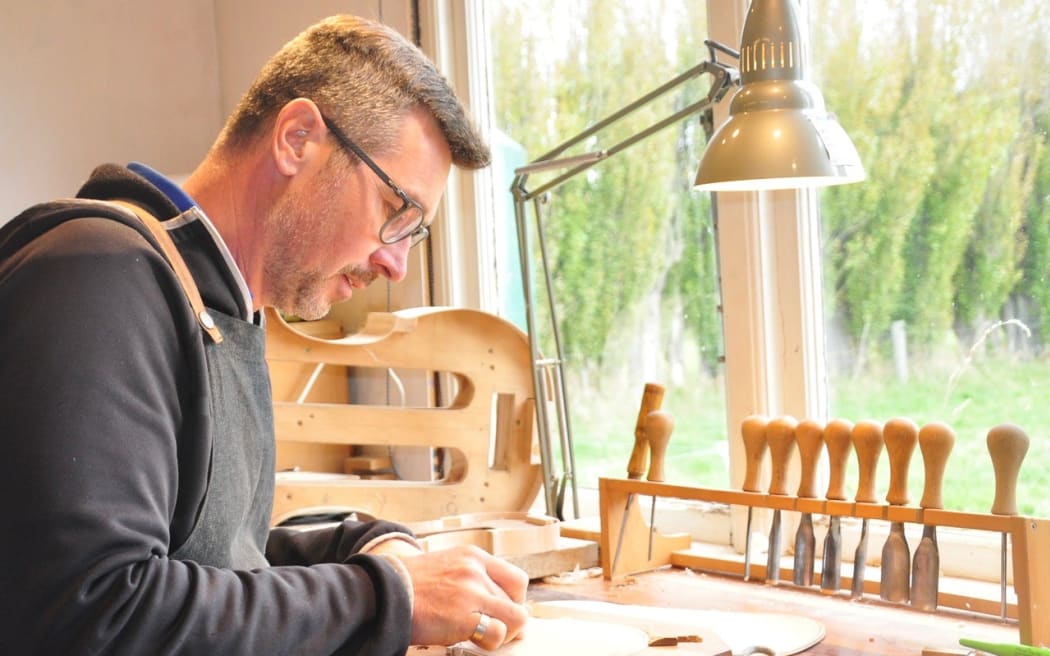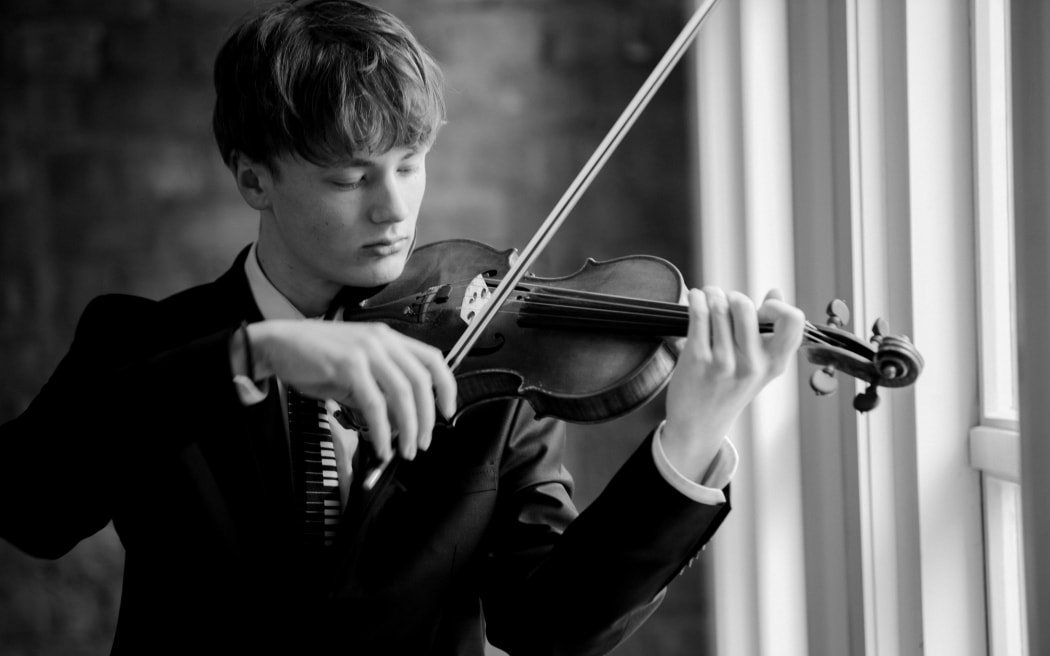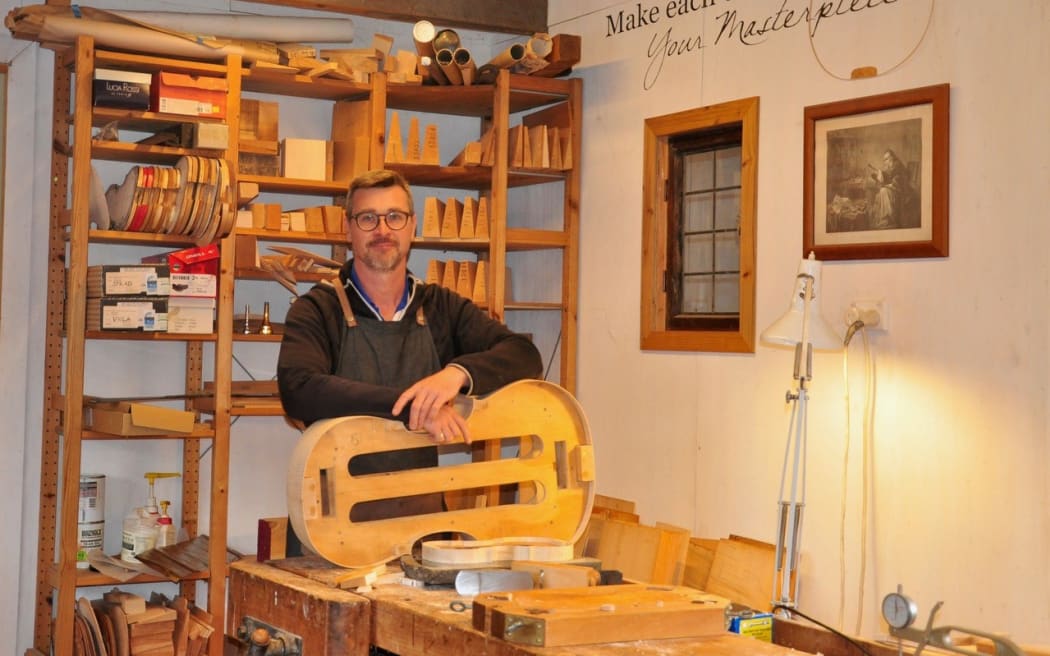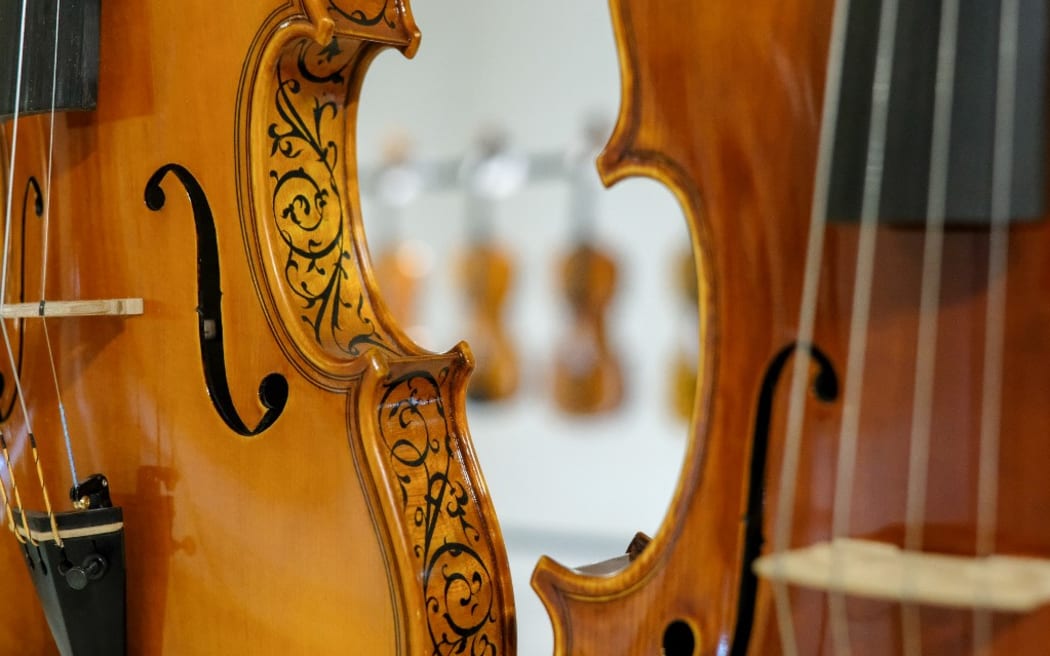
Stringed instrument maker Tobi Widemann Photo: Supplied / Tobi Widemann
There's a maxim on the wall of Tobi Widemann's workshop: Make each day your masterpiece.
It generally takes six months for Widemann to make one of his own masterpieces, be it a violin, viola or maybe even a cello.
You've been hearing his instruments for a while, played by members of our leading orchestras, and more recently the joint winner of the 2024 National Concerto Competition, Peter Gjelsten, who performed on a violin Widemann made for him a few years ago.
Listen to the Final of the 2024 National Concerto Competition

Peter Gjelsten plays a Widemann. Photo: Peter Wiezoreck www.flairstudios.co.nz
RNZ Concert host Bryan Crump asked Widemann if he follows the fortunes of his violins and violas in the way horse breeders might follow the performance of their stallions.
"I definitely try to keep a tab on where the instruments are and how they are sounding, try to keep in touch with the players. It's important to look after the instruments and make sure the players are happy."
And there's a growing number of Widemanns out there for him to keep tabs on. He reckons there are about 68 or 69 violins and violas in circulation and at least one cello, since he began making instruments commercially 24 years ago.

Widemann has recently begun extending his product range down into the cello section. Photo: Supplied / Tobi Widemann
Raised in Germany, Widemann's first experience with violins was as a player in his childhood, but he was also a child who loved making things.
When he was in his teens, a friend suggested he go along to a talk by a violin maker. Widemann was hooked.
We have a New Zealand woman to thank for Widemann's decision to make most of his instruments in Aotearoa. No sooner had he graduated from his violin-making course in the Bavarian town of Mittenwald, than he's following his heart to Christchurch.
He brought with him knowledge and skills that go back hundreds of years, and while Mittenwald is German, the model for the violins made there owes much to the great instrument makers of Cremona in Italy, the likes of Antonio Stradivari, Andrea and Nicola Amati, and Guarneri del Gesu.
Even several centuries later on the other side of the world, Widemann says, those violins still set the standard.

Some models don't need updating. Photo: Alexei Danichev / Sputnik
"You can't go past the Cremona School from the golden period of violin making."
The raw materials too, despite living in a new land with its own remarkable native timbers, remain the same: spruce wood for the top and then maple for the sides and the back, and ebony for the fingerboard and pegs.
"It's spruce that has to come from areas that have long winters maybe in higher regions, so the grain is quite close together, and then the maple. It's called Bosnian Maple, it's got this beautiful flame and curl - as we call it - in the wood that makes it so beautiful when you look at it and sort of turn it in the light and roll it around."
As Widemann points out, changing the wood will have a profound effect on the sound of the instrument - and players have been pretty happy with the sound good violins have made since the late 1600s.

Viola player Bryony Gibson-Cornish: another Widemann customer. Photo: Supplied
And just like any well-made machine, a Widemann violin/viola/cello needs a bit of running in.
"Playing an instrument in, speeds up that process of things settling, number one, and also helping the instrument to sound better sooner ... it's kind of the fun part for a player as well to put their own fingerprint on the instrument."
Good after-sales service is key, says Widermann.
But having begun making cellos, does he have any plans to move down another notch and start making the big daddy of the violin family, the double bass? Then he could stock a whole string orchestra.
Widemann laughs. "I play a double bass and I enjoy it, but I think I'll stick to cello for now."

